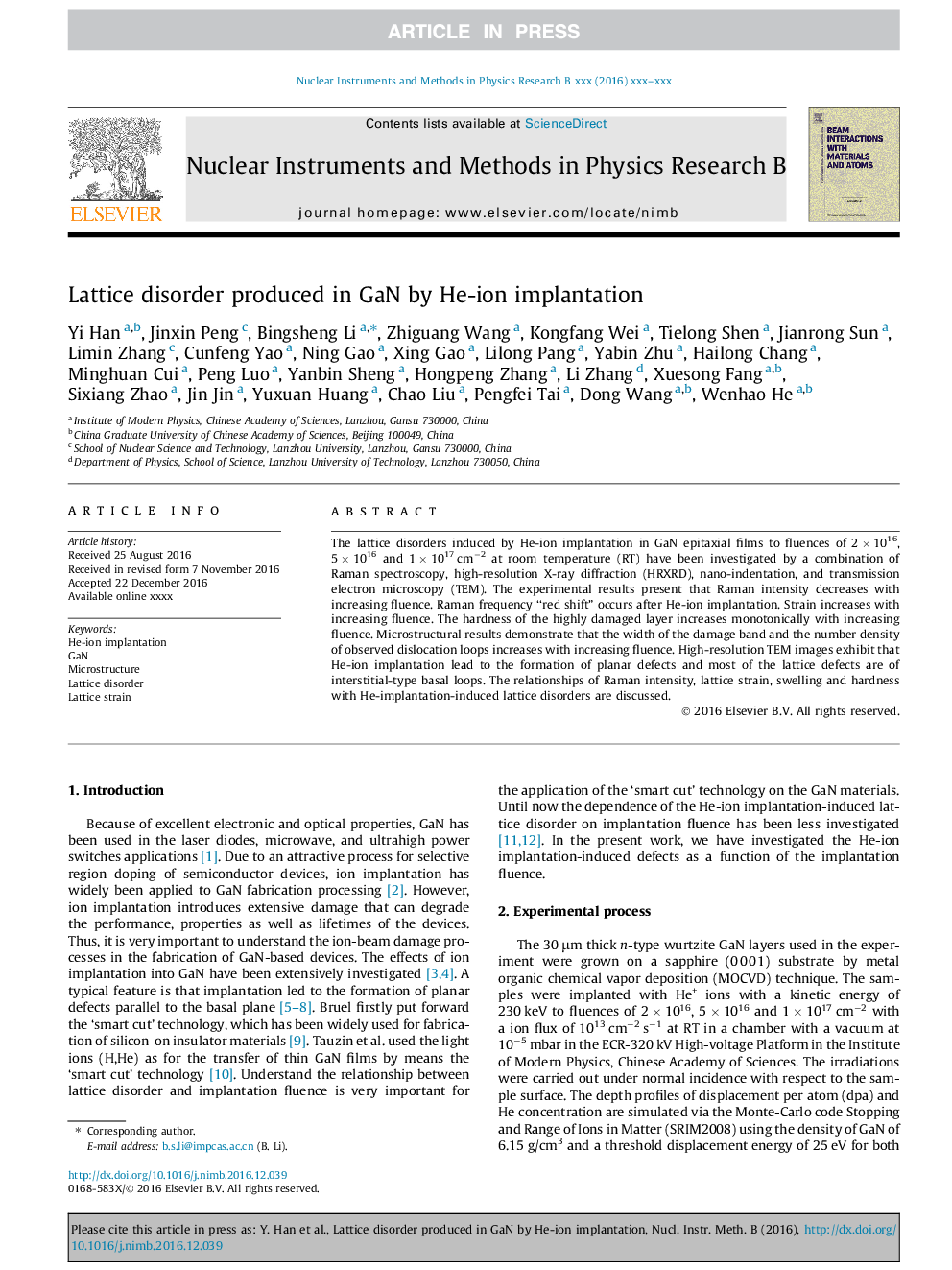| Article ID | Journal | Published Year | Pages | File Type |
|---|---|---|---|---|
| 5467574 | Nuclear Instruments and Methods in Physics Research Section B: Beam Interactions with Materials and Atoms | 2017 | 5 Pages |
Abstract
The lattice disorders induced by He-ion implantation in GaN epitaxial films to fluences of 2Â ÃÂ 1016, 5Â ÃÂ 1016 and 1Â ÃÂ 1017Â cmâ2 at room temperature (RT) have been investigated by a combination of Raman spectroscopy, high-resolution X-ray diffraction (HRXRD), nano-indentation, and transmission electron microscopy (TEM). The experimental results present that Raman intensity decreases with increasing fluence. Raman frequency “red shift” occurs after He-ion implantation. Strain increases with increasing fluence. The hardness of the highly damaged layer increases monotonically with increasing fluence. Microstructural results demonstrate that the width of the damage band and the number density of observed dislocation loops increases with increasing fluence. High-resolution TEM images exhibit that He-ion implantation lead to the formation of planar defects and most of the lattice defects are of interstitial-type basal loops. The relationships of Raman intensity, lattice strain, swelling and hardness with He-implantation-induced lattice disorders are discussed.
Related Topics
Physical Sciences and Engineering
Materials Science
Surfaces, Coatings and Films
Authors
Yi Han, Jinxin Peng, Bingsheng Li, Zhiguang Wang, Kongfang Wei, Tielong Shen, Jianrong Sun, Limin Zhang, Cunfeng Yao, Ning Gao, Xing Gao, Lilong Pang, Yabin Zhu, Hailong Chang, Minghuan Cui, Peng Luo, Yanbin Sheng, Hongpeng Zhang, Wenhao He,
